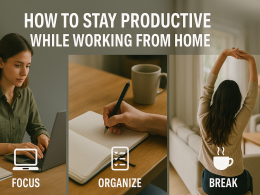As the world slowly recovers from the effects of the pandemic, companies are faced with a new challenge: luring workers back into the office. The trend towards remote work has been on the rise for years, and many employees have grown accustomed to its perks and flexibility. To entice them back, businesses need to offer more than just a desk and a paycheck. In this article, we’ll explore what office perks and flexibility workers want, how they can help bring people back post-pandemic, as well as some challenges that companies may face in implementing these changes. Join us as we delve deeper into this topic!
What office perks and flexibility do workers want?
In today’s competitive job market, companies are looking for ways to differentiate themselves and attract top talent. One way they can do this is by offering attractive office perks and flexibility options that workers crave.
When it comes to office perks, employees want more than just free coffee or a ping-pong table in the break room. They want benefits that align with their values and lifestyle. For example, a wellness program that offers yoga classes or mental health resources can help reduce stress levels and increase employee well-being.
Flexibility is another key factor for many workers. With the pandemic forcing people to work remotely, many have come to appreciate the ability to work from home or adjust their schedules as needed. Offering flexible hours or remote-work options can be a major selling point for potential candidates.
Another perk that workers desire is professional development opportunities such as training programs or tuition reimbursement. This shows employees that their employer is invested in their growth and development within the company.
Companies should consider offering unique office perks and flexibility options tailored to what their employees value most. By doing so, they will not only attract top talent but also retain current staff who feel valued and supported in their careers.
How will these changes lure workers back after the pandemic?
As the world slowly emerges from the pandemic, companies are realizing that they need to adapt to attract workers back into the office. Offering perks and flexibility is a key strategy for luring workers back.
Firstly, providing flexible work arrangements such as remote work options or flexible schedules can be a game-changer. Workers want to feel like their employers trust them enough to allow them some autonomy in deciding when and how they get their work done.
Additionally, offering unique office perks can make all the difference in attracting new talent and retaining current employees. This could include anything from free snacks, on-site fitness classes or even a dog-friendly workspace!
But beyond just offering these benefits, it’s important for companies to communicate effectively with their employees about these changes. Companies need to clearly articulate what perks and flexibilities are available so that employees feel valued and empowered.
By creating an environment where people genuinely enjoy coming into work each day – whether it’s because of cool office spaces or relaxed dress codes – businesses will see more motivated staff who are enthusiastic about working together towards company goals.
What are some of the challenges companies face when implementing these changes?
Implementing office perks and flexibility can be a daunting task for companies, especially those that are not used to such changes. One challenge that companies may face is resistance from some employees who prefer the traditional way of working. It’s important for companies to communicate the benefits of these changes and address any concerns or questions their employees may have.
Another challenge is managing expectations. Companies need to ensure that they set realistic expectations for both employees and management in terms of what can be offered and how it will impact productivity. Additionally, there needs to be clear guidelines on how flexible work arrangements will work, such as when employees need to be physically present in the office or when remote work is allowed.
Furthermore, implementing these changes requires a significant investment in resources, including technology and training programs. Companies must also consider the financial implications of offering new benefits like wellness programs or childcare services.
Ensuring consistent policies across all departments and locations can also pose a challenge. Standardizing practices ensures fairness but requires careful planning.
Implementing office perks and flexibility requires thoughtful planning with considerable effort invested into communication with stakeholders both within your company culture as well as externally with business partners alike.
How will the workplace change in the future?
The workplace has already gone through significant changes over the past year due to the pandemic. Remote work became a necessity for many companies, and even as we slowly return to some sense of normalcy, it’s clear that remote work is here to stay. But what other changes can we expect in the future?
One trend that’s likely to continue is a focus on flexibility. Companies have realized that they can trust their employees to get their work done from anywhere, and employees appreciate being able to balance their personal lives with their professional ones.
Another change could be a shift towards more collaborative spaces in physical office environments. While individual workstations will still be needed, there may be an emphasis on creating areas where colleagues can come together and collaborate on projects or simply socialize.
Technology will also play a big role in shaping the future workplace. With advancements like virtual reality and artificial intelligence, it’s possible that meetings could become fully virtual experiences where participants feel like they’re all sitting at the same table.
It’s impossible to predict exactly how the workplace will change in the future – but one thing is certain: companies will need to remain flexible and adaptable if they want to attract top talent and keep up with changing trends.
Conclusion
The pandemic has forced companies to re-evaluate their approach to work and workplace culture. With remote work becoming more prevalent, office perks and flexibility have become crucial in luring workers back to the physical workspace. By providing employees with a comfortable and accommodating environment that caters to their personal needs, companies can not only increase productivity but also foster a sense of loyalty among staff.
However, implementing these changes is not without challenges. Companies must balance the needs of individual employees with organizational goals while managing costs. Nonetheless, investing in these initiatives will pay dividends over time as it attracts top talent and strengthens company culture.
As we move towards a post-pandemic world, workplaces are likely to evolve further. It’s now up for employers to adapt quickly if they want to remain competitive in attracting skilled employees who value working environments that support them both professionally and personally. Ultimately providing flexible options combined with meaningful incentives will be key for creating an engaging modern-day workforce across all industries.












